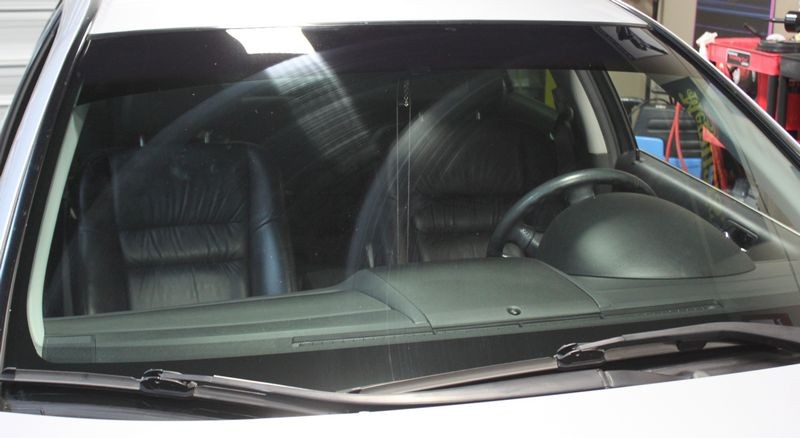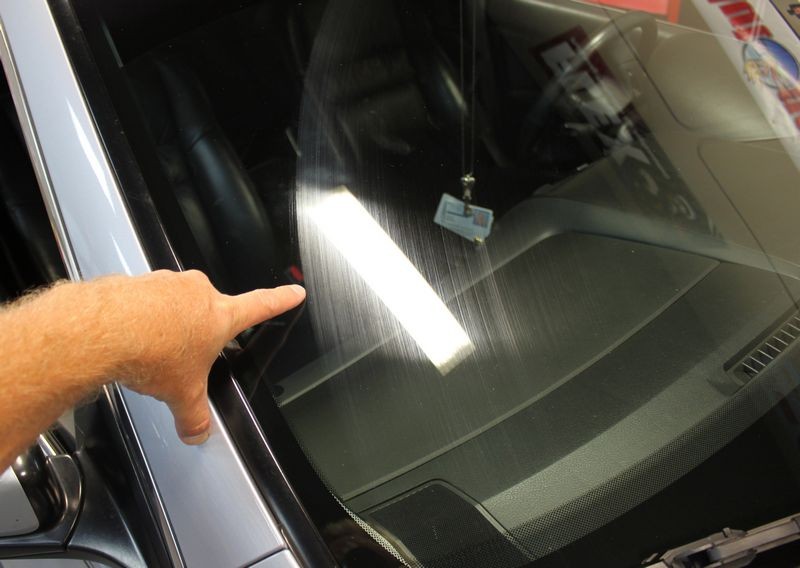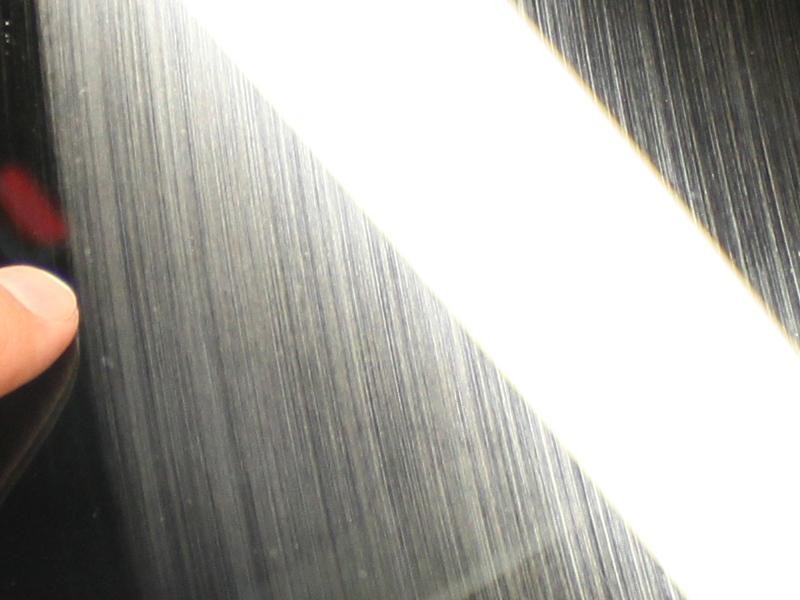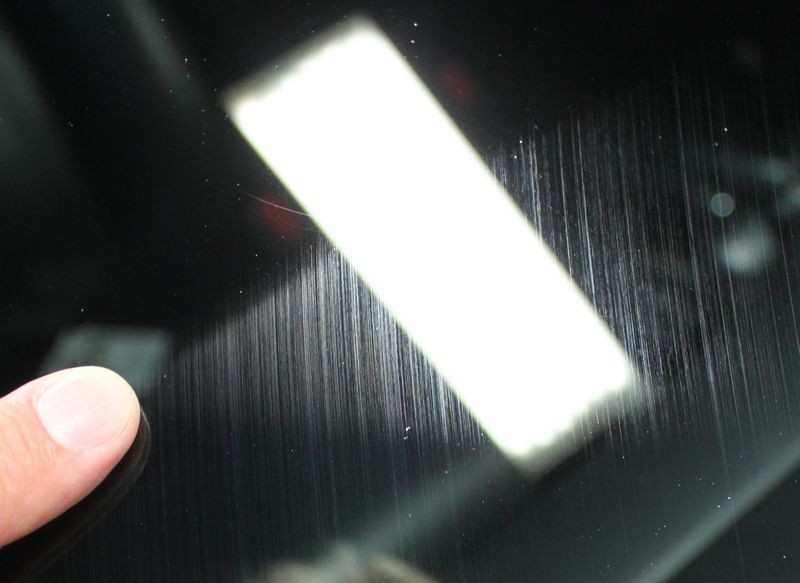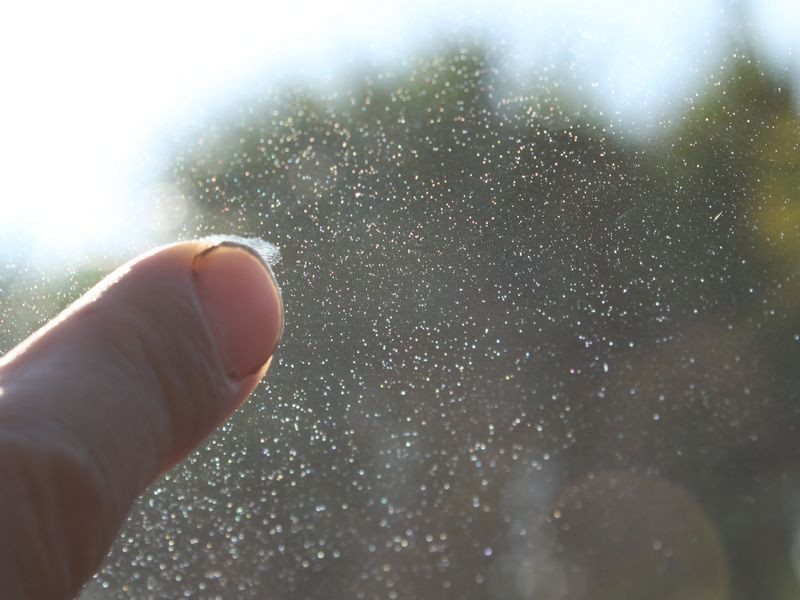JJZ4MR
New member
- Apr 20, 2017
- 5
- 0
View attachment 57849
View attachment 57853
My DD had some serious hard water stains and wiper trails. I went on a learning path of getting a perfect windshield. I started out with trying distilled white vinegar in various dilutions. Had some improvement, but with a little wetness ( like with dew in the AM )
I could still see the wiper trails.
I didn't have scratches, just trails from the wiper paths. I tried to chemically remove them with The Works bathroom cleaner in various dilutions. It really did a pretty good job, all the hard water stains were gone, but I could still see the trails under just the right lighting/wetness conditions.
I tried claying the glass, with minimal effect.
I then moved up in aggressiveness, with magic erasure, green scotch brite pad, 0000 steel wool. I was getting closer to perfection.
Even though I was checking my work as I went, I got TOO aggressive with the Green Scotch Brite. In one spot on a wiper pathway ( right in front of my line of sight ) and put some micro scratches into the windshield.
I was frantically working on this spot, using hard pressure, staying on it with elbow grease for several minutes. I did check as I went, but it really takes JUST the right lighting and angle to see them. Lesson learned.
So onto ordering Cerium Oxide. I don't have a rotary ( it's on my Master Buy List ), But I have a high speed drill and a 3M headlight restorer kit. It has a 3000 grit polishing pad 3". The backing plate has a foam pad under the hook/loop and the pad has a foam pad under the grit surface.
As you can see in the pic, I marked the problem area with blue painters tape from the inside. made my slurry in the top of a plastic lid, that I could dip the pad into. I knew I was going to have spatter, but planned on washing the car immediately after.
I did a lot of checking in this spot as I went. S
tarted getting some good results as I spent more time with speed and pressure, speed of the drill needing to be fast, keep it moving, not letting the CO dry. I used distilled water in a spray bottle to keep things wet. All in all, got great results, did the whole window, not spending as much time on my non problem areas.
Took about 1.5 hours. It was a learning curve.
BUT, as I removed my tape, I pulled up a jagged 6" piece on paint in just one spot on the top of the window. I've NOW read about Honda paint having a lot of issues. Now onto repainting this spot.....The learning continues.
Just as a side note: I've been detailing my myself/family/friends since 1980. Everything by hand. I've just come out of the stone age. I'm going to start my " new" official detailing business. ( FL licensed/Accountant/DBA with checking acct )
I've just joined this and some other detailing sites. I'm compiling what tools and products I need to get up to speed on paint correction, ceramic coating and keeping a very open mind on some of the new products available on the market to make myself more efficient with better results.
I want to be a professional, while still keeping this new business as a part time endeavor, as I own my own personal training business.

View attachment 57853
My DD had some serious hard water stains and wiper trails. I went on a learning path of getting a perfect windshield. I started out with trying distilled white vinegar in various dilutions. Had some improvement, but with a little wetness ( like with dew in the AM )
I could still see the wiper trails.
I didn't have scratches, just trails from the wiper paths. I tried to chemically remove them with The Works bathroom cleaner in various dilutions. It really did a pretty good job, all the hard water stains were gone, but I could still see the trails under just the right lighting/wetness conditions.
I tried claying the glass, with minimal effect.
I then moved up in aggressiveness, with magic erasure, green scotch brite pad, 0000 steel wool. I was getting closer to perfection.
Even though I was checking my work as I went, I got TOO aggressive with the Green Scotch Brite. In one spot on a wiper pathway ( right in front of my line of sight ) and put some micro scratches into the windshield.
I was frantically working on this spot, using hard pressure, staying on it with elbow grease for several minutes. I did check as I went, but it really takes JUST the right lighting and angle to see them. Lesson learned.
So onto ordering Cerium Oxide. I don't have a rotary ( it's on my Master Buy List ), But I have a high speed drill and a 3M headlight restorer kit. It has a 3000 grit polishing pad 3". The backing plate has a foam pad under the hook/loop and the pad has a foam pad under the grit surface.
As you can see in the pic, I marked the problem area with blue painters tape from the inside. made my slurry in the top of a plastic lid, that I could dip the pad into. I knew I was going to have spatter, but planned on washing the car immediately after.
I did a lot of checking in this spot as I went. S
tarted getting some good results as I spent more time with speed and pressure, speed of the drill needing to be fast, keep it moving, not letting the CO dry. I used distilled water in a spray bottle to keep things wet. All in all, got great results, did the whole window, not spending as much time on my non problem areas.
Took about 1.5 hours. It was a learning curve.
BUT, as I removed my tape, I pulled up a jagged 6" piece on paint in just one spot on the top of the window. I've NOW read about Honda paint having a lot of issues. Now onto repainting this spot.....The learning continues.
Just as a side note: I've been detailing my myself/family/friends since 1980. Everything by hand. I've just come out of the stone age. I'm going to start my " new" official detailing business. ( FL licensed/Accountant/DBA with checking acct )
I've just joined this and some other detailing sites. I'm compiling what tools and products I need to get up to speed on paint correction, ceramic coating and keeping a very open mind on some of the new products available on the market to make myself more efficient with better results.
I want to be a professional, while still keeping this new business as a part time endeavor, as I own my own personal training business.
